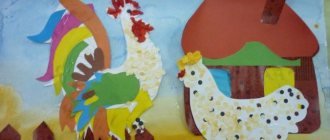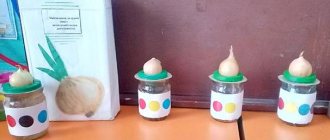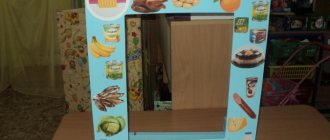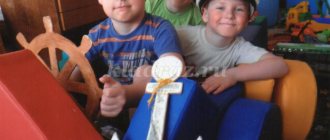Collection of technological maps for role-playing games (senior age)
Technological map of the role-playing game “Riding on the Bus.”
Goal: continue to introduce professions, give an idea of the profession of a bus driver, talk about actions with objects (such as a steering wheel, traffic lights, road signs, rules of behavior in public places).
Game tasks:
— to cultivate interest in games with elements of traffic rules, a positive attitude towards compliance with traffic rules, a desire to reflect one’s social experience in a role-playing game, skills of cultural behavior in public transport, respect for professions related to the theme of the game;
- develop attention, observation, responsibility;
— to consolidate ideas about the types of passenger transport, about the responsibilities of a passenger, about the rules of behavior in public transport and at a bus stop, about the professions of a driver, conductor, dispatcher, controller, traffic controller, car mechanic, gas station attendant, car wash attendant;
- consolidate knowledge about some traffic rules: about the rules for crossing the road at a pedestrian crossing and when getting off the bus, about traffic lights;
- develop the ability to come up with a game concept, create an object-based gaming environment, contribute to the development of the game’s storyline by introducing new roles and situations; learn to distribute roles and take on a specific role, conduct role-playing dialogue, plan and perform game actions in accordance with the role, establish role-playing interaction in the game.
Structural components of the game:
Game roles:
driver, passengers, conductor, gas station attendant, car mechanic, car washer, controller, dispatcher, traffic controller.
Game activities:
“
Building a bus”, “Bus driver school”, “Going by bus” (to kindergarten, park, on a visit, to the theatre, museum, cinema, zoo, cafe, to the hospital, to the store, to the hairdresser), “On an excursion”, “Bus depot”, “Buses of our city”, “A trip by bus” (out of town, to a river, to a forest, to a village, to a dacha), “A fun trip by bus”, “A busy intersection”
Pedagogical support of the game:
The teacher provides organization and discreet guidance.
Predicted results:
Enriching children's personal experience, the ability to develop the plot of the game. Gaining knowledge about the various responsibilities of passengers and drivers, rules of conduct in public transport and at a bus stop. Develop the ability to conduct role-playing dialogue.
| Enriching the content of role-playing games | Attributes for a role-playing game (subject - game environment) | Roles/Game activities | Game themes | ||
| Excursion to the bus stop : observation of the bus and the work of the driver, the behavior of people at the bus stop, how passengers are disembarked and boarded, the actions of transport and pedestrians Reading : riddles, poems, tales about the bus Board game “Assemble a bus” (cut-out pictures, planar geometric constructor) Didactic game “We are passengers”, “Where are we going?”, “What kind of stop is this?”, Outdoor games "Drivers and Passengers", "Three Traffic Lights" Conversation “How to behave on the bus”, review and discussion of reminders Dramatization game “We are bus passengers”: reinforcing the rules of behavior in public transport, playing out problematic situations Productive activity : application “Bus”, joint production of bus tickets, construction of a bus from building material, chairs Listening to music: "Bus" music. M. Iordansky, lyrics. O. Vysotskaya | A bus made of chairs, a steering wheel, a bus number, a gearbox, pedals, a microphone, a walkie-talkie, a driver’s cap and vest (cape), a conductor’s bag, vests (capes): a car mechanic, a gas station attendant, a car wash attendant, a traffic controller, a dispatcher, a controller. Traffic light or signal cards, rod. Bus stop: a tripod on which is mounted a card with a symbolic image of the stop: “Theater”, “Kindergarten”, “Zoo”, “Hospital”, etc. Pedestrian crossing: sign, zebra mat. Bus repair tools, pump. A hose for simulating filling a car with gasoline, a small canister. A small bucket with a rag. Money, wallets, tickets, checks. Cash machine. Dolls, animal toys. | Driver : drives the bus, gives a signal, announces and makes stops, communicates via radio with the dispatcher, checks the condition of the bus, inflates the tires. Passengers : enters or exits at stops, buys a ticket, follows the rules of behavior in public transport, prepares for a long trip (pack things, water, food for the road; comb their hair, dress up if they are going to the theater, on a visit). Conductor : sells tickets, monitors compliance with the rules of behavior on the bus, explains to passengers how to get to the desired stop. Gas tanker: pours gasoline into the bus, takes money, punches the receipt. Car mechanic: repairs the bus, fixes problems, changes a tire, takes money for repairs, punches a receipt. Car washer : washes the bus, takes the money, punches the receipt. Controller: checks whether passengers have tickets. Dispatcher: issues a route sheet, communicates via radio with the driver, and controls movement along the route. Adjuster: regulates traffic, gives signals, fines for traffic violations. | « We are building a bus" "Bus Driver School" “We’re going by bus” (to kindergarten, park, on a visit, to the theater, museum, cinema, zoo, cafe, to the hospital, to the store, to the hairdresser) "On an excursion" "Bus depot" "Buses of our city" “Bus trip” (out of town, to the river, to the forest, to the village, to the dacha) "A Fun Bus Journey" "Busy Crossroads" | ||
Organizing a role-playing game using a technological map
Natalia Konkina
Organizing a role-playing game using a technological map
.In November last year, our kindergarten hosted a methodological association of educators dedicated to innovative methods of working with preschoolers.
At this event, I gave a presentation based on my work experience on the topic “Using a technological map to organize a role-playing game .” During preparation, I found a lot of material on the site and express my deep gratitude to my colleagues.
So, the report.
play still remain relevant . After all, play, as we know, is the leading activity of a child.
Let's consider a role-playing game .
The pedagogical value of the plot-role-playing game lies in the fact that during the game , in addition to the relationships dictated by the plot , the role taken or the rules, another kind of relationship arises - no longer conditional, but real, actual relationships between children.
In the game, it becomes clear: how the child feels about the successes or failures of his play partners, whether he enters into conflicts with other participants in the game , whether he knows how to restrain immediate impulses, whether he is ready to help a friend , whether he is attentive to other participants in the game , how accurate he is in fulfilling the role, etc. d.
Doctor of Pedagogical Sciences Alexander Vladimirovich Zaporozhets in this regard wrote that children's play is “a genuine social practice of a child, this is his real life in a team in which social qualities and moral consciousness of a child’s personality are formed.”
What do we have now? Unfortunately, we are faced with the primitivization of children's games. The main reason for this situation is the simple non-interference of adults. Moreover, some do this simply because they do not consider it necessary to observe children’s play at all - they play and play for themselves, the main thing is that there are no fights and quarrels; while others take a completely principled position, sincerely believing that children’s play should not be interfered with. In the end, we have what we have.
Leaving the right to choose a game to the child , the teacher needs to try to see the immediate prospects and correctly predict the development of children’s play activities. In accordance with program objectives, individual characteristics and interests of each child.
The main methods of pedagogical guidance of children's role-playing games are the method of dialogue, the creation of problem situations, direct and indirect influences on the game and the players.
In addition to these methods, in my practice I began to use technological maps of plot-role-playing games . This is what I want to share with you.
What is a technological map ? .
The explanatory dictionary gives this definition.
TECHNOLOGICAL CARD - a form of technological documentation in which the entire process of processing a product is recorded, operations and their components, materials, production equipment, tools, technological modes , time required for manufacturing the product, qualifications of workers, etc. are indicated.
There are technological maps of dishes , products, processes, lessons.
And we will look at the technological map of the game - a sequence of actions that is depicted graphically (i.e. in the form of diagrams or drawings, since children (the majority)
They don’t know how to read yet.
The technological map offers a new approach to organizing a story game by modeling it. Based on the developed model, the teacher helps children remember episodes, actions of game , and the content of relationships.
These technological maps were developed based on the method of comprehensive support for amateur games, which was proposed by teachers S. L. Novoselova and E. V. Zvorygina and first published back in 1979. During development, special attention was paid to ensuring that the tasks of not only the full education of children in all five complementary educational areas were solved, but also the tasks associated with the progressive development and complication of the play activities of the pupils themselves.
But how can children decipher the technological map ? They can if they took part in its compilation (that is, this is the easiest way to understand - do it step by step with them)
Together with the children, we compiled a technological map that will help organize any role-playing game . It is universal for any age and any subject . Many thanks to Svetlana Mozhanova - it was in her material that I saw this.
Any game has its own rules. This card shows the basic rules: "Call your friends"
,
“Assign roles”
,
“Choose the necessary items”
,
“Play”
,
“Clean up the toys”
.
I want to share with you my experience of creating a technological map for the game “Flight into Space”
.
We all know that when organizing a role-playing game , we must give children maximum information on the topic of the plot .
It is necessary to enrich in every possible way the direct and indirect experience of children, their ideas about the objective world and social relationships in various areas of reality. Moreover, this knowledge should not only be “encyclopedic”
, as practical, effective in nature, it must be
“living”
knowledge, such experience that the child could put into practice.
Therefore, we watched cartoons and presentations about space
including at home (parents were instructed to watch the cartoon “The Secret of the Third Planet”
, talked, looked at illustrations in books, atlases
played board games , built space objects from construction sets
Productive activity was no exception: they created a model of outer space from plasticine:
Colored pictures on a space theme to create the album “Deep Space”
Drawing space objects using stencils
Let's return to the technological map .
While composing it, the children and I came up with game stories , which I wrote down. Then together we turned these stories into graphic drawings, i.e., we modeled situations.
Together with children and parents, they prepared attributes for the game that would give the child the opportunity to show imagination, creative imagination, and resourcefulness.
And now I suggest you look at the photo report of the role-playing game “Flight into Space”
, which was carried out using
a technological map . children's interest in learning a new game plot that will involve everyone. The technological map of our game is in the very first photo, under the title.
Delivery of the rocket to the cosmodrome
Installing the rocket at the launch position
The Space Center is always in touch.
Physical training classes for astronauts under the guidance of a trainer
Pre-flight medical examination
Farewell to family...
Ready to start!
Have a good flight! Good luck!
At the initial stages of mastering the game, it is better to use technological maps with a ready-made (pre-invented) plot , depicted schematically on one sheet. And with the enrichment of the gaming experience, technological maps can be compiled by the children themselves from individual fragment cards .
. At the request of the children, the storylines can be changed by complicating the plot and the number of roles.
Dear friends! I invite you to see what plots for the game the children and I have depicted graphically. From such plots a technological map is then compiled .
And I suggest you title cards
Match the picture with the action
This is only a small part of the possible plots . We will definitely continue creating and playing them.
Thus, the use of a technological map of a role-playing game awakens and maintains children’s interest in the game, and also promotes the manifestation of independence and initiative.






